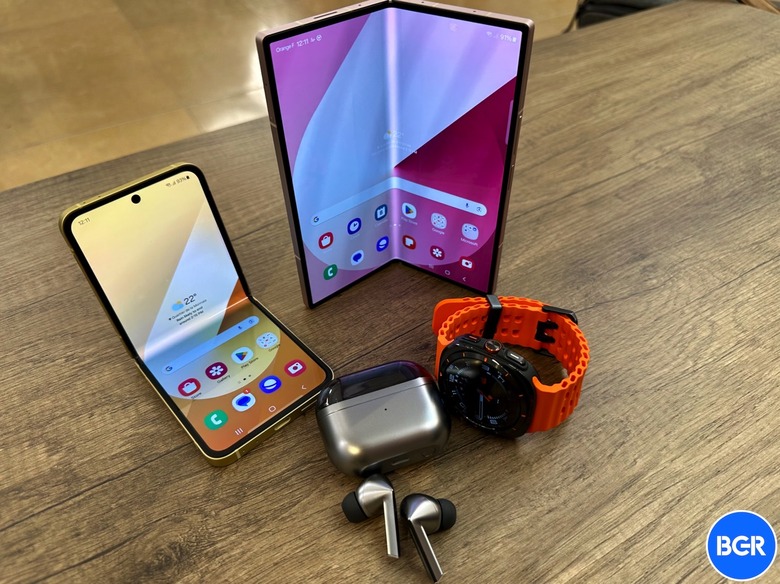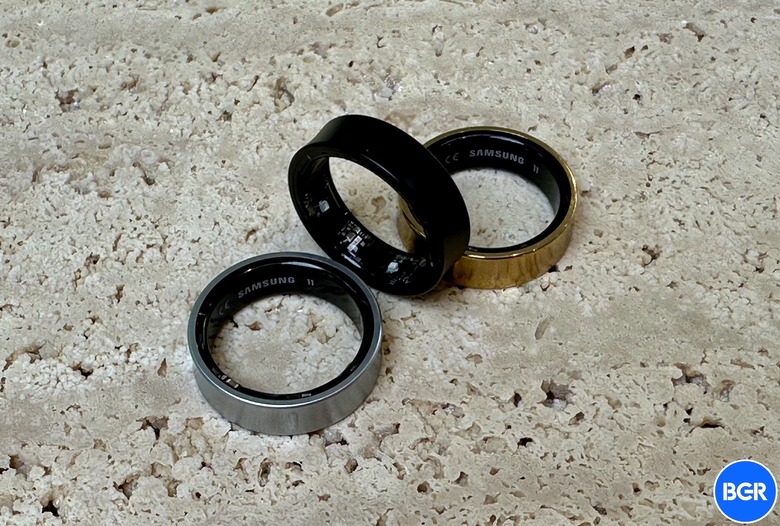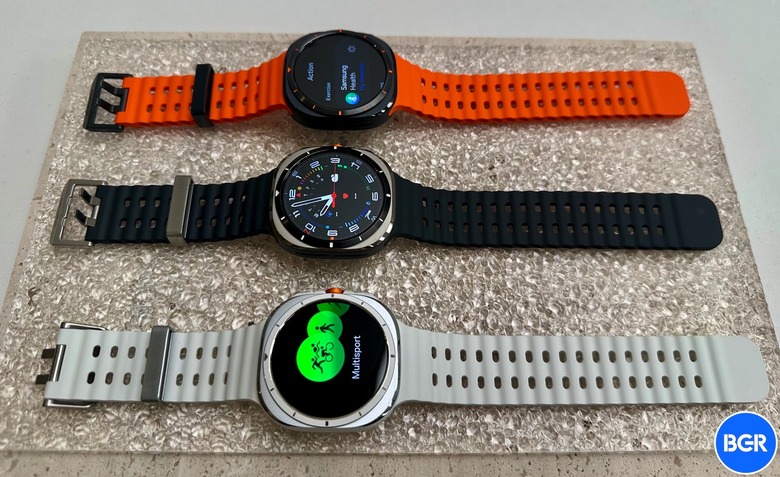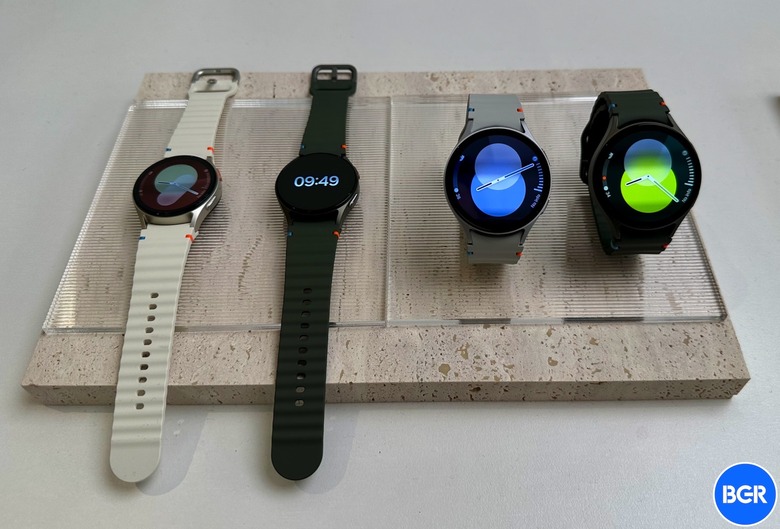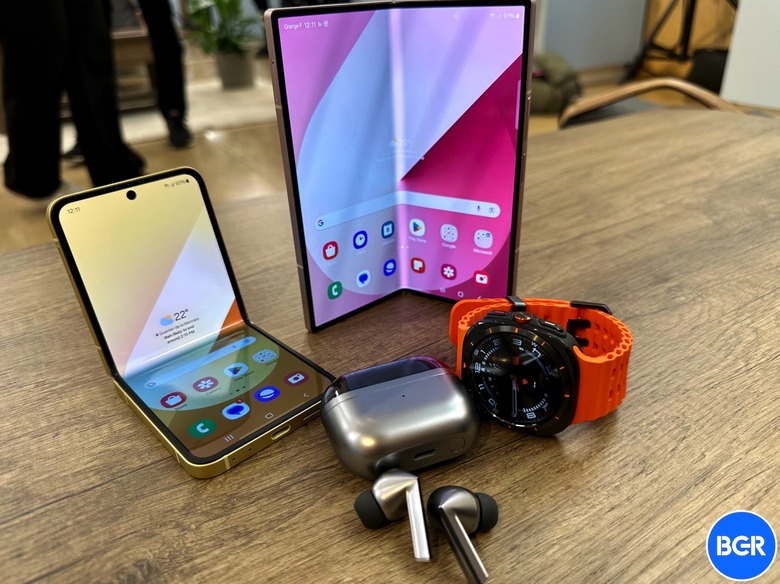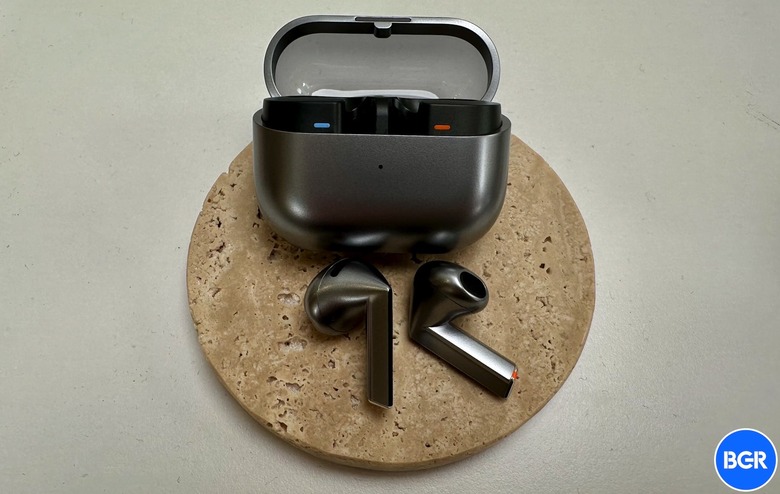Galaxy Ring And 4 Other Samsung Wearables Unveiled At Unpacked
The Galaxy Z Fold 6 and Flip 6 might be the stars of Samsung's Unpacked event, but they're not the only Galaxy-branded products launching on Wednesday. Samsung unveiled no less than five wearable devices at the show, and they're exactly what you'd expect if you've been following the rumors. We're looking at three distinct products, and two of them have cheaper versions that launched alongside them.
Samsung has officially announced the Galaxy Ring smart ring, the Galaxy Watch Ultra and Galaxy Watch 7 smartwatches, and the Galaxy Buds 3 Pro and Galaxy Buds 3 wireless earphones.
When I came to Paris, I was actually more interested in two of them: the Galaxy Ring and the new Galaxy Buds with a stem. But the Galaxy Ring was at the top of my list of new gadgets to try out at Unpacked, even more so than Samsung's new smartphones.
Galaxy Ring
I first saw the Galaxy Ring at MWC 2024 in Barcelona earlier this year, but all I could do at the time was look at it. Samsung wasn't ready to reveal everything about its finger-worn wearable. Nearly five months later, Samsung is finally prepared to launch the Galaxy Ring to help you improve your health and fitness monitoring.
Unfortunately, the Galaxy Ring won't be as cheap as we expected. It costs $399.99, and it'll be available in the US only at first. However, the good news is that it'll offer health and fitness tracking without requiring a subscription for those services, as was once rumored.
The Galaxy Ring is made of Titanium Grade 5 and comes in nine sizes. You'll first order a sizing kit before choosing the model that's right for you. It's also available in three colors: Titanium Black, Titanium Silver, and Titanium Gold.
The ring weighs between 2.3 grams and 3 grams and is quite comfortable to wear. Despite rocking plenty of sensors and a battery to power it all, it'll feel like a regular ring. That was my first impression of the wearable before Samsung's event this week.
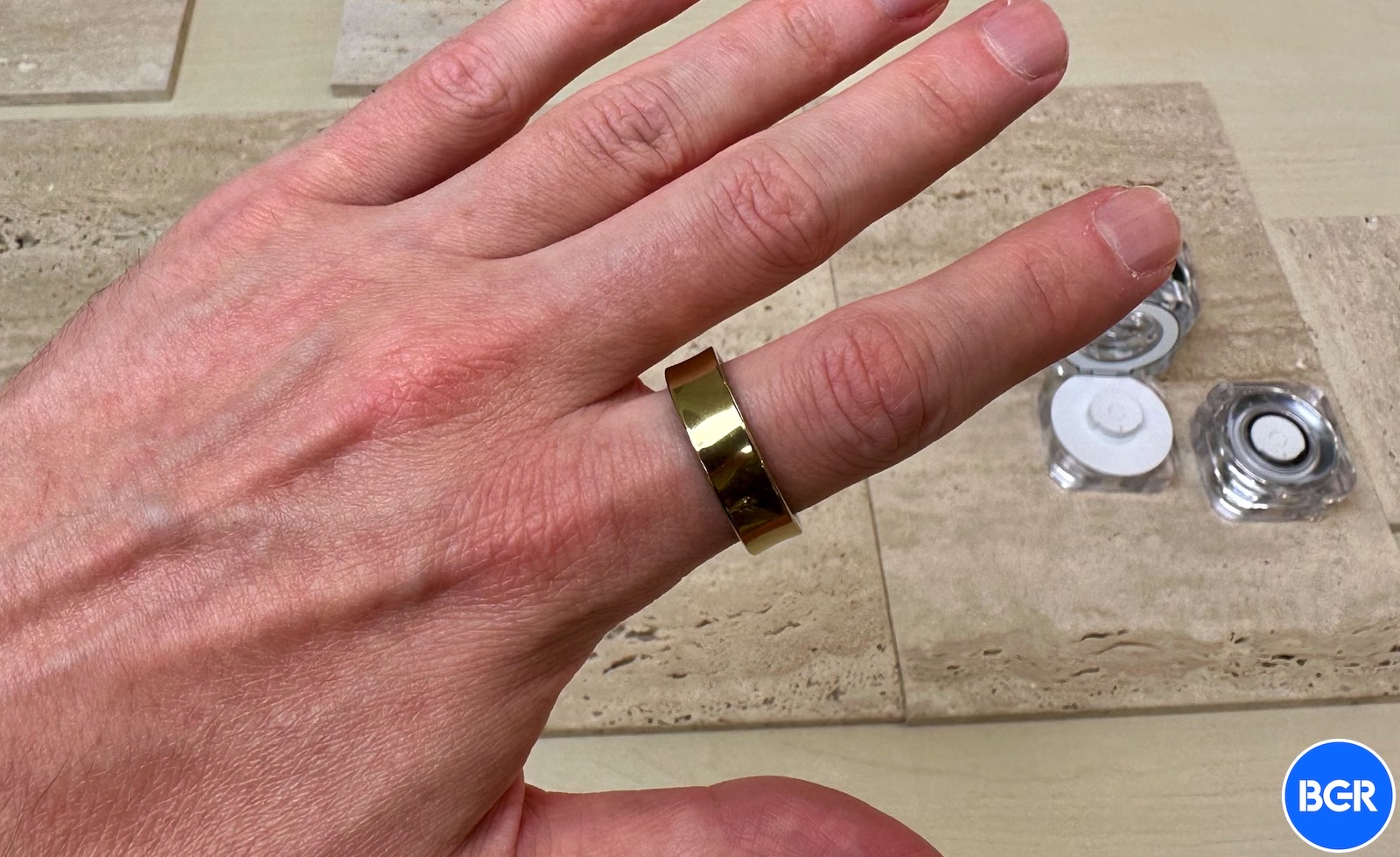
Speaking of battery life, you get 6 or 7 days per charge, depending on ring size, and an additional 10 days for the charging case. That's great battery life for a health-oriented device that measures your parameters continuously. According to Samsung, battery life will increase if you pair it with a Galaxy Watch. That's because both devices will beam data to the phone.
The Galaxy Watch might feature better sensors, depending on the model.
As for the health and fitness data sent to the Samsung Health app, sleep monitoring is a big focus for the wearable. The Galaxy Ring will use Galaxy AI algorithms to monitor various sleep-related parameters (movement during sleep, sleep latency, heart, and respiratory rate) and snoring. Cycle Tracking will let you monitor your menstrual cycle by taking temperature readings at night.
You'll also get a Sleep Score to inform you about last night's sleep quality.
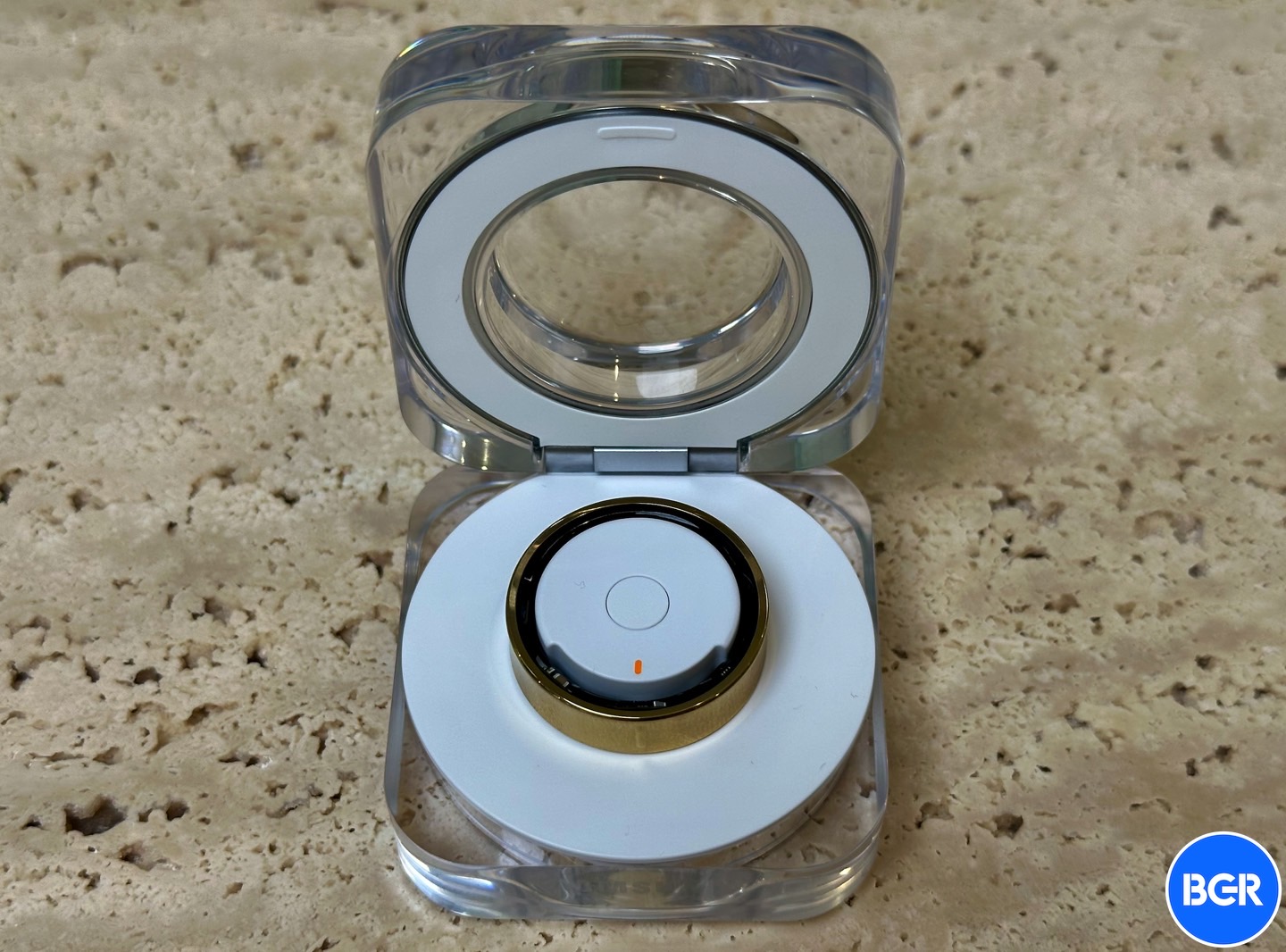
The Galaxy Ring will also monitor your heart rate during the day and automatically detect certain workouts, like running. But it can't track as many workouts as a Galaxy Watch, so don't expect the same wide detection range.
Different AI algorithms will produce an Energy Score that takes into account your sleep, activity, heart rate (sleep), and heart rate variability (sleep).
Finally, the Galaxy Ring will support certain gestures for compatible Galaxy smartphones, like double pinching for dismissing alarms or taking photos.
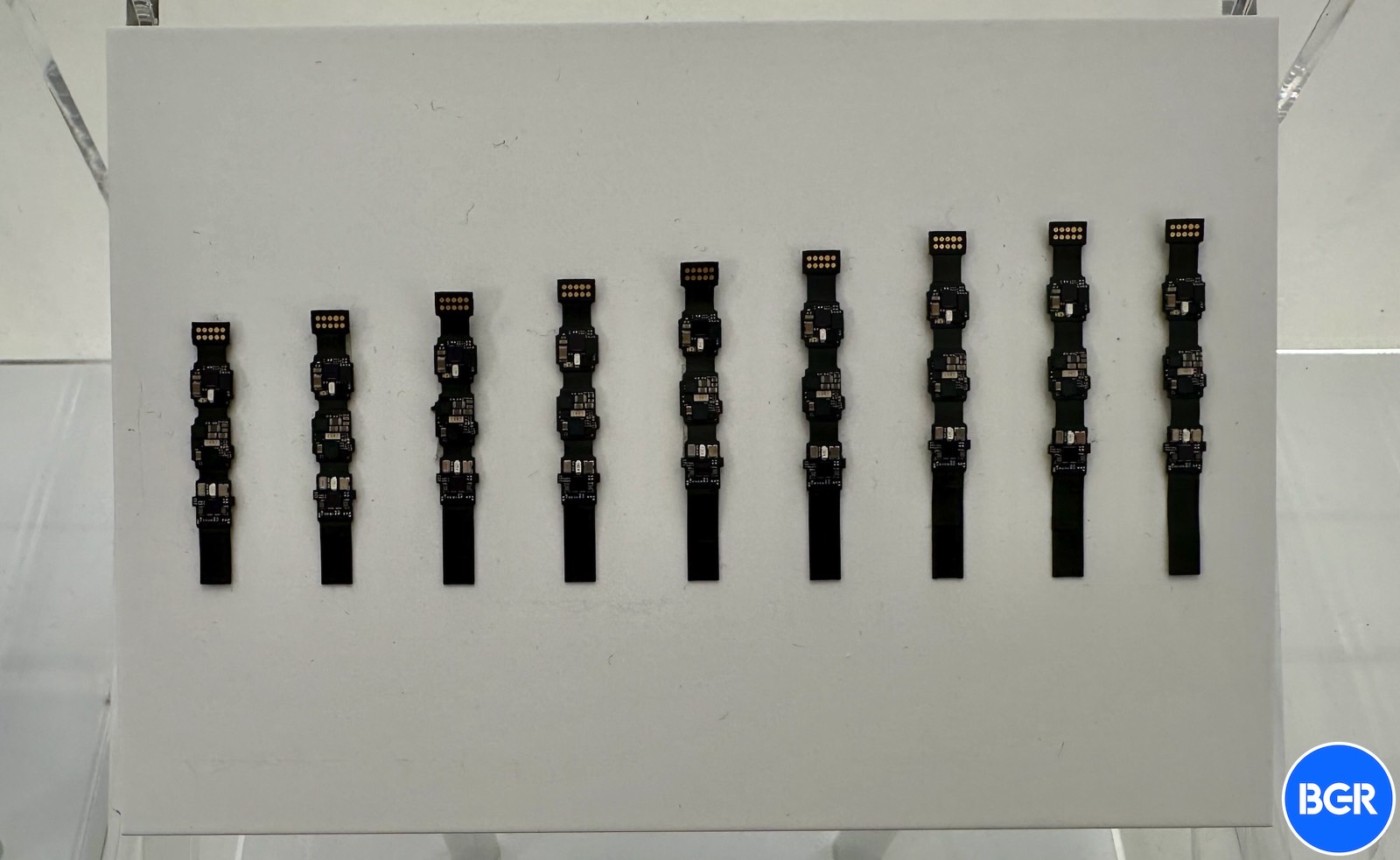
Galaxy Watch Ultra
There's no doubt in my mind the Galaxy Watch Ultra is Samsung's direct response to the Apple Watch Ultra. Like the Apple wearable, the Galaxy Watch Ultra features a much larger display (47mm) and a larger overall case. The Galaxy Watch Ultra is the most expensive new wearable in Samsung's July 2024 lineup, starting at $649.99.
Like Apple's Ultra model, Samsung's Ultra wearable comes with new buttons. A Quick Button lets you initiate workouts or pair it to a specific watch function. An Emergency Siren button lets you play a loud sound in emergencies.
Made of Titanium Grade 4, the Galaxy Watch Ultra promises "extreme durability." That means 10ATM water resistance and a wider range of altitudes. The wearable will work from 500 meters underwater to 9,000 meters above sea level.
A Night Mode turns the entire display red, similar to the Apple Watch Ultra. If it's too sunny outside, the wearable's screen can go up to 3,000 nits of brightness to ensure perfect readability.
New fitness features include a new multi-sports tile, a new Functional Threshold Power (FTP) feature that uses AI to measure cycling power, and an advanced Personalized HR Zone that lets you tweak your exercise intensity levels.
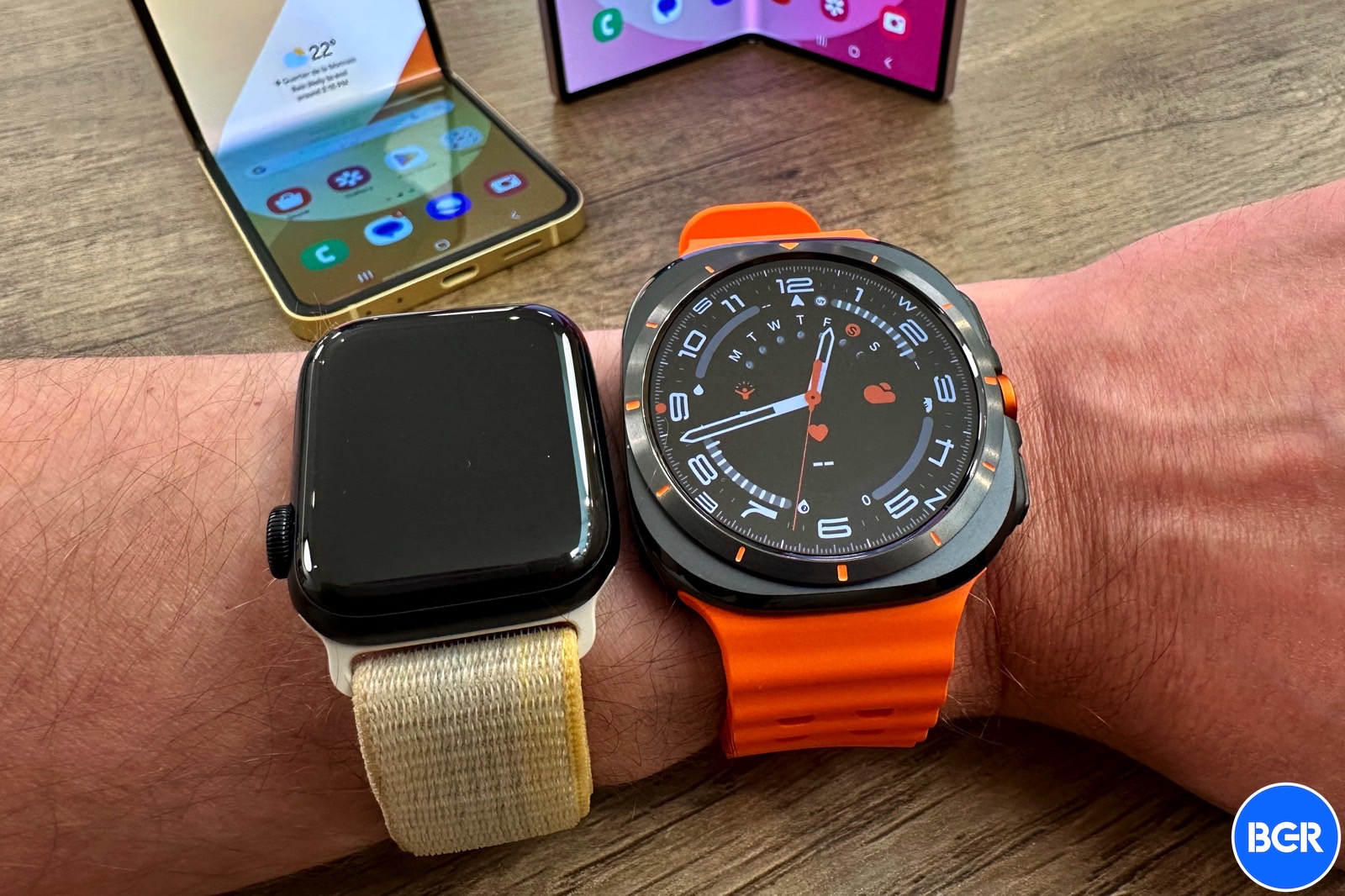
The Watch Ultra will also support all the health features available on the cheaper Watch 7 model, featuring the same new chip and BioActive Sensor.
The Ultra will feature the best battery life of Samsung's watches, offering 48 hours of regular use and up to 100 hours when Power Saving is enabled.
Galaxy Watch 7
The Galaxy Watch 7 might be the new Samsung smartwatch most people buy. It's a lot more affordable than the Ultra, starting at $299.99. Like the other wearables, the Watch 7 will be available for preorder on Wednesday and ship on July 24th.
The wearable features an Exynos W1000 3nm processor that's three times faster and 30% more efficient. It also sports a dual-frequency GPS to improve location tracking. But the most interesting upgrade concerns the sensors pressing against your skin. The Watch 7 features a BioActive Sensor that should offer improved accuracy when performing readings.
In addition to heart rate, temperature, and ECG, the sensor also supports tracking advanced glycation end products (AGEs) that can provide information about your metabolic health. That's a first for Galaxy Watches.
Like the Galaxy Ring, the new watch has a new AI algorithm for measuring sleep. Also interesting is the new Sleep Apnea feature, which is FDA-authorized to monitor signs of moderate to severe sleep apnea.
The Galaxy Watch 7 and Ultra will also pack a few Galaxy AI features, like Suggested replies, which use AI to offer reply suggestions to incoming text messages.
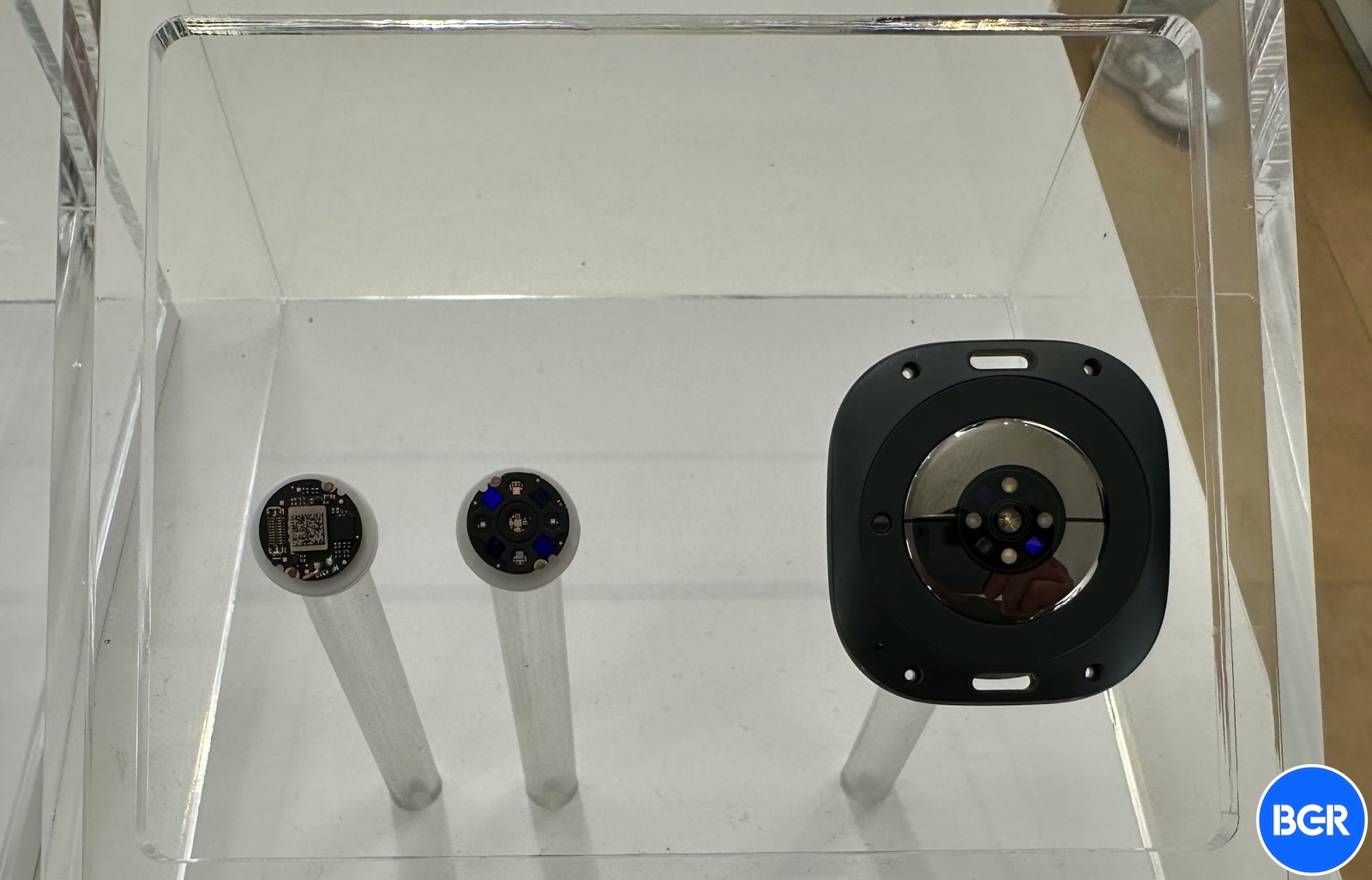
Galaxy Buds 3 Pro
True wireless earphones are also wearable devices, and Samsung decided to overhaul its Galaxy Buds this year, giving them a design that's more similar to the AirPods than previous models.
Also, the Galaxy Buds 3 and Galaxy Buds 3 Pro come with advanced Galaxy AI features, which should be a given at this point for any new Samsung product.
Priced at $249.99, the Galaxy Buds 3 Pro are the equivalent of Apple's AirPods Pro. They feature removable tips like Apple's earphones. The stems are prismatic instead of circular and feature a lighting system. The stems also support more gestures. You can pinch each earbud to play/stop music playback or swipe up and down the "Blade Lights" to control the volume.
The Buds 3 Pro feature 2-way speakers and dual amplifiers to improve the quality and range of sound. Ultra High-Quality Audio supports a double sampling rate with SSC codec, or high-resolution audio. That way, you should experience the music it was intended to be enjoyed.
I have been testing the Buds 3 Pro for a couple of days, and the sound experience has been great so far. But since I've paired them with an iPhone, I didn't get to experience any Galaxy AI features.
Galaxy Buds 3
The Galaxy Buds 3 are the equivalent of Apple's regular AirPods. Like the Buds 3 Pro, they come in black and white but are cheaper, at $179.99. However, don't expect replaceable earbuds for the regular Buds 3.
Like the Buds 3 Pro, the regular Galaxy Buds 3 will also support Galaxy AI features. The interpreter lets you hear translations directly into the Buds, and Voice Command lets you control playback without touching physical controls on the Buds or phone.
Active noise cancelation (ANC) is also part of the Buds 3 package. But the Galaxy Buds do not support Ambient Sound, Adaptive Noise Control, Voice Detect, and Siren Detect. These features will let the Buds 3 Pro identify the type of noise around you and adjust the sound automatically.
Both the Buds 3 and Buds 3 Pro come with cases that support USB-C and wireless charging. The cases feature a transparent top that allows you to see the two earbuds.
I know what you're thinking. But no, you can't use the Galaxy Buds 3 with the Galaxy Ring only. You'd need another device to get the music from.
